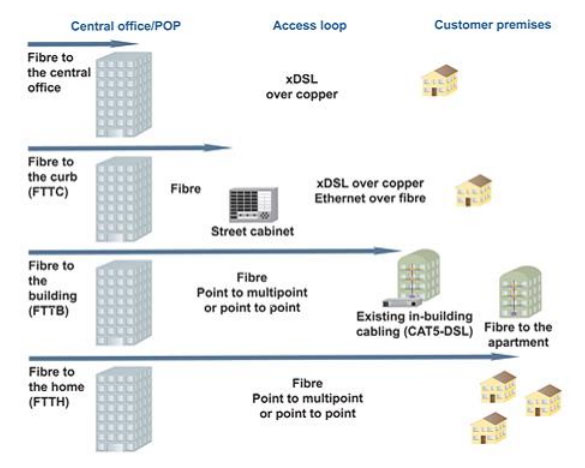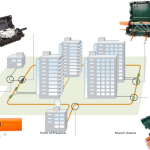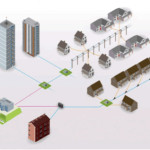Optical fibre has incredibly low loss coupled with extremely high capacity, making it a unique transmission medium. From the point of view of the access network The Shannon Limit can effectively be ignored. Distance is not an inherent limitation as optical signals can travel 70–80 km before they need to be amplified. Instead the limitations on bit rate arise from the pace of development of transmission equipment.
In 1995, the Full Service Access Network (FSAN) organization was formed by network operators wanting to build high-speed broadband access networks, and their work has been standardized through the International Telecommunications Association (ITU).

FSAN developed the passive optical network (PON), which uses inexpensive optical splitters to share the optical signal from a single fibre out among the separate fibre strands feeding individual subscribers. PONs are called “passive” because, other than at the central office and subscriber end points, there are no active electronics within the access network. Standards-based activity began with ATM PON (APON), which evolved into Broadband PON (BPON) and then into Gigabit PON (GPON). Described by ITU-T G.984 in 2004, GPON provides 2.5 Gbps downstream and 1.25 Gbps upstream shared between up to 64 users over distances of at least 20 km.
At around the same time, Ethernet PON (EPON) was established as a result of work from the Ethernet in the First Mile (EFM) group in the IEEE Standards Association (IEEE 802.3ah). The group also developed standards for Fast Ethernet and Gigabit Ethernet over singlemode fibre for use in point-to-point fibre access networks, offering speeds of 100 Mbps and 1 Gbps, respectively, over distances of 10 or 20 km.
Both the ITU and IEEE standards continue to evolve. The IEEE 802.3av Task Force finished work on the 10-Gigabit Ethernet PON standard in September 2009. The following year, the ITU approved 10-Gbps GPON, or XG-PON, which offers 10 Gbps downstream and 2.5 Gbps upstream for up to 128 users. Equipment vendors are currently working towards NG-PON2, which will increase speeds by a factor of four to 40 Gbps downstream and 10 Gbps upstream. In the longer term WDM-PON promises to bring even higher speeds, with each user receiving a dedicated wavelength at speeds of 1 Gbps (unshared capacity).
Although the exact broadband speed provided depends on the technical choices made by the operator, the potential exceeds that of other technologies by a wide margin. Equipment is commercially available today that can provide up to 1 Gbps per user, not per group of users.







